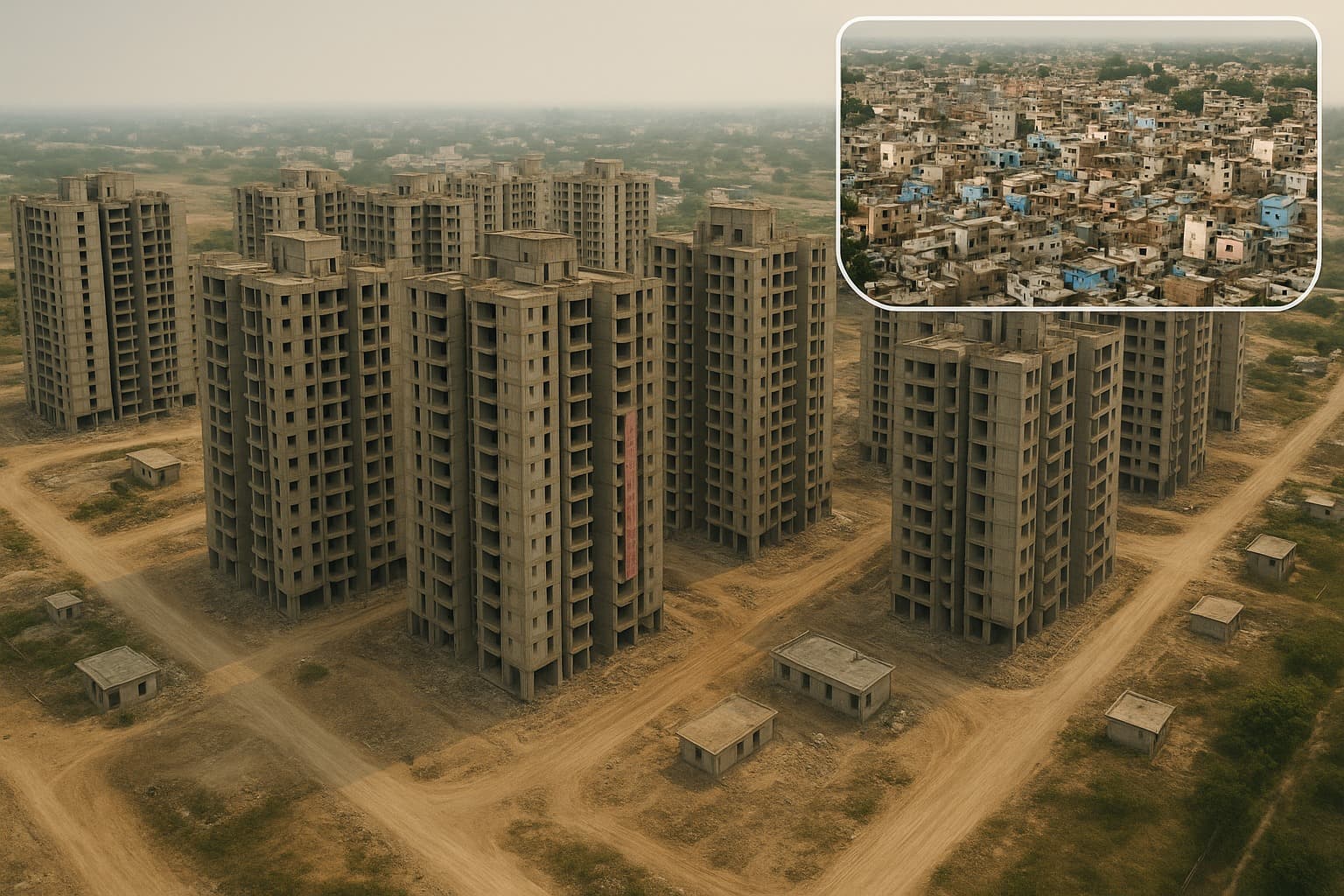The Demand-Supply Gap in Indian Real Estate: Challenges and Solutions
Summary
India's real estate faces a demand-supply gap, especially in affordable housing, driven by urbanization and rising incomes. High land costs and slow approvals hinder supply. Reforms and incentives are crucial to bridge this gap.

Demand-Supply Gap in Indian Real Estate
If you’ve ever searched for a home in India—whether in the buzzing streets of Mumbai, the tech corridors of Bengaluru, or even the growing outskirts of Pune—you’ve probably faced the same frustrating reality. There are countless projects, advertisements promising “dream homes,” and glossy brochures that make every flat look like paradise. And yet, when it comes to finding a house that truly fits your budget and expectations, the options suddenly shrink. This is the heart of the demand-supply gap in Indian real estate—a mismatch that has been troubling homebuyers and developers alike for years, and one that feels even sharper in 2025.
India’s real estate market is vast. It is one of the largest employers, one of the strongest contributors to GDP, and a magnet for investors worldwide. But despite its size, the sector suffers from a recurring paradox: the demand for homes is immense, but the real estate supply that matches this demand often falls short. Especially in the affordable and mid-income categories, where most Indians are looking to buy, the imbalance is striking.
Why Is Demand Rising So Fast?
Let’s start with the obvious question: why is housing demand in India so high? The reasons are both economic and social.
Urbanization Boom: Every year, millions migrate to cities, chasing jobs, education, and better lifestyles. Metros and Tier-1 cities are bursting at the seams. As a result, the property demand exceeding supply in India is especially visible in these urban hotspots.
Young Population: India has one of the youngest populations in the world, and millennials are now entering their home-buying years. Unlike older generations who were content with rentals or joint family living, this demographic aspires for independence, privacy, and modern amenities. Their preferences create new layers of demand, especially in compact yet affordable homes in metro cities.
Rising Incomes and Aspirations: As disposable incomes grow, people no longer want just “a house.” They want gated communities, modern layouts, good connectivity, and lifestyle amenities. This aspirational push has made the housing demand vs supply in India 2025 even more pronounced.
Why Supply Is Struggling to Catch Up
If demand is soaring, why can’t supply keep up? The answers lie in economics, policy, and priorities.

Land Prices: In most Indian cities, land is prohibitively expensive. Developers who acquire land at steep costs naturally pass those costs on to buyers, making homes less affordable. This worsens the real estate supply shortage in Indian metros.
Regulatory Bottlenecks: Developers often wait years for approvals. Delays mean fewer projects get completed on time, leaving buyers waiting and pushing up overall costs.
Skewed Focus on Luxury: Developers frequently prioritize premium projects where margins are higher. The irony? Affordable housing—where demand is strongest—gets neglected, creating a housing shortage vs demand in metro cities India.
Financial Strains: After the NBFC crisis and tighter lending norms, developers often face funding gaps. Projects stall, deliveries are delayed, and the real estate imbalance between demand and supply continues.
The Ripple Effects of the Demand-Supply Gap
This imbalance doesn’t just stay on paper—it shapes people’s lives and wallets.
Skyrocketing Prices: When demand outpaces supply, prices inevitably rise. For many middle-class families, home ownership remains a dream out of reach.
Rental Market Growth: More families end up renting, pushing up rents in metro cities.
Speculative Investments: Investors sometimes buy in bulk, further reducing availability for genuine homebuyers.
Emotional Toll: For many Indians, buying a house is tied to security, pride, and stability. The demand-supply gap challenges in Indian real estate market make this milestone emotionally draining.
Tier-2 and Tier-3 Cities: A Different Story
Interestingly, the real estate imbalance between demand and supply looks very different outside the metros. In cities like Jaipur, Lucknow, or Nagpur, the problem is often the reverse: oversupply. Developers rushed into these markets expecting massive demand, but job growth and migration didn’t match the pace. The result? Thousands of unsold units gather dust while metro families struggle with shortages.
This uneven distribution of supply is what makes the Indian real estate market so complex—booming in some areas, stagnant in others.
How Can India Bridge the Gap?
Fixing the housing demand vs supply gap is not simple, but it is possible. Several measures could change the game:

Government Reforms: Faster approvals, single-window clearances, and land acquisition reforms could dramatically improve delivery timelines.
Affordable Housing Incentives: Policies like tax breaks, lower GST, and subsidies for budget housing could encourage developers to focus on this segment.
Public-Private Partnerships: Collaborations between the government and private players could unlock large-scale affordable housing projects.
Technology & Innovation: Using prefabrication, AI-driven planning, and smart materials can lower costs and shorten construction timelines.
Better Financing: Easier access to home loans for buyers and funding for developers can close the financial gaps.
Looking Ahead to 2025 and Beyond
So, what does the future hold? In 2025, the Indian real estate market stands at a critical crossroad. The demand is undeniable. The population is young, incomes are rising, and urban centers are expanding. But unless supply adapts—both in scale and affordability—the impact of demand-supply gap on Indian housing prices will only grow sharper.
Yet, there is hope. The government’s continued focus on affordable housing, coupled with infrastructure growth (metros, expressways, airports), is opening up new opportunities. Developers are also beginning to realize that long-term sustainability lies not in just luxury, but in addressing where demand truly exists.
At its core, the demand-supply gap is not just an economic issue—it’s a human one. Behind every statistic is a young couple searching for their first home, a migrant worker dreaming of stability, or a family trying to upgrade for a better life. Solving this gap is not just about balancing numbers, but about fulfilling aspirations and making the promise of “home” a reality for millions.
Summary (100 words)
The demand-supply gap in Indian real estate is one of the most pressing challenges of 2025. On one side, urbanization, rising incomes, and millennial homebuyers are fueling massive housing demand in India. On the other, real estate supply shortages in metros—driven by high land costs, policy delays, and a developer focus on luxury housing—have created a widening imbalance. This mismatch pushes up property prices, fuels rental demand, and leaves affordable housing undersupplied. Bridging the gap will require government reforms, affordable housing incentives, innovative construction, and financing support. Closing this divide is essential to make home ownership accessible for all.
